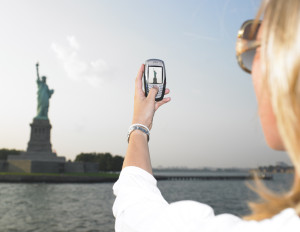Why and how to start taking your own pictures for presentations
One FAQ I get is about where to find stock images for free. I’ll save that answer for another blog post, because one answer I give is that you should start snapping your own pictures (check this out if you want some of my links to stuff like this).
In case you need convincing, here are six reasons to shoot (some of) your own presentation pictures:
- They’re free.
- You’ll develop your eye for telling stories with pictures.
- You have front row seats to what you need to represent. (You are where you work day in and day out!)
- You’re the best person to tell your story (your own pics are naturally going to be from your point of view).
- You’ve probably got a “good enough” camera in your phone.
- There’s a good chance you could benefit from having pictures related to your job that your organization isn’t prepared to supply.
This said, here are a few things I’ve learned along the way:
Shoot for story before quality
Your goal is storytelling before being an awesome photographer. Consider this example:
I have a picture that’s nearly black, but here’s why it works for me. It’s a picture taken on an airplane through the crack of the seats in front of me. The person in front of me was video conferencing using the wifi on the plane. Now there’s a story about a work-anywhere opportunity.
The picture’s nearly black because it was dark…except for the glow of the computer screen. In this case, the story is clear (you can tell what’s going on), but there’s no open email or documents (meaning I’m not revealing someone’s corporate battle plan by showing the picture).
Capture the highest resolution possible
Yes, I said, “good enough” above, and I don’t know about you, but I don’t carry my SLR with me everywhere.
Capturing the highest resolution possible is important because you have more freedom to crop images to improve your storytelling.
Shoot multiple shots from various angles and compositions
Your phone doesn’t give you a lot of professional camera features, but it costs you nothing to shoot several shots in the same fell swoop.
Place the object of the picture in various positions (top 1/3, bottom 1/3, whatever). You’ll have more flexibility when cropping the image later.
The same goes with capturing multiple angles if you can (and if it’s appropriate).
Parallel to both of these is zooming (telescopically). Shoot something closer up and farther away.
Save the editing for the laptop
Yes, I know Instagram filters can be fun. In most cases, however, your phone isn’t a great substitute for seeing the picture in context of a presentation. Wait ’til you import it to do the editing.
Name the image usefully
I embed keywords right into the file name so I can find it in a search. Trust me, when you’re getting a presentation together it’s a momentum-killer to slog through 732 files visually because they all start with IMG_123.
Create a special library for your professional work
If you have a large quantity of images, you’ll save a lot of time if you have a file for dedicated to those you use professionally or on a particular topic. This is especially true if you’ve named the file poorly and they’re buried in the midst of all those pictures of Uncle Joe’s got-my-bunion-removed party.
Always save the original file
Often a picture has more than one story to tell. Don’t leave part of a story on the cutting room floor (how’s that for an analog analogy for a digital thang?).
Be legally smart
This is the fine print that says that I don’t render legal or professional advice and you should consult your attorney, doctor, and shaman before engaging in any program of this kind. Gag.
We all live in different worlds professionally. Just be aware that your organization’s counsel may have an opinion about this kind of stuff. Here’s an example model release form.
The bottom line
Shooting your own pictures will help your presentations even beyond capturing your own images. Besides all the reasons listed above, you’ll improve your visual thinking skill.
And THAT will improve your presentations even when you’re not using photographs.

Kevin Smith
I think the biggest problem when it comes to this is time